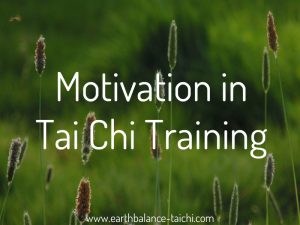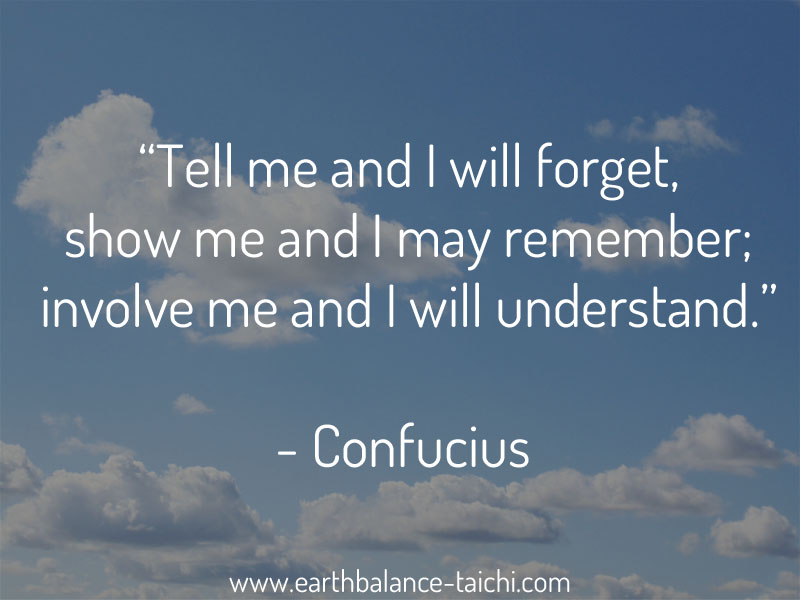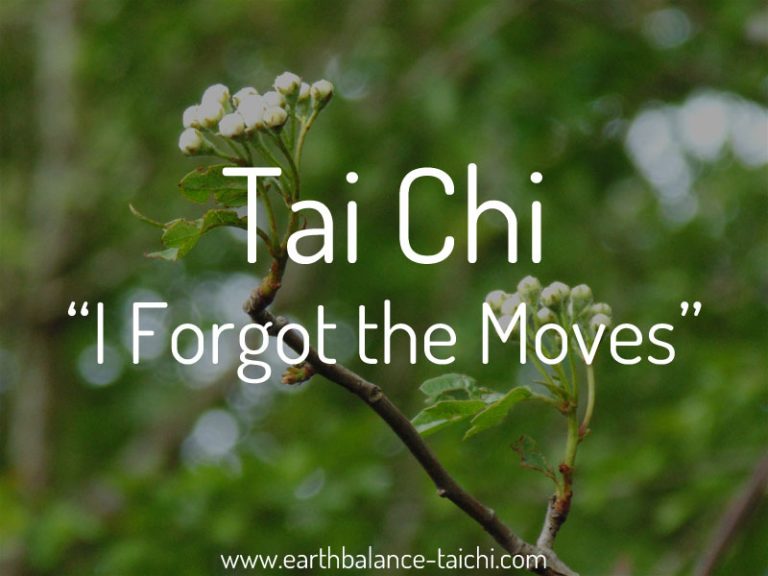Challenges in Tai Chi Training

Challenges in Tai Chi Training
As a student, you can expect many challenges to come up during your training in a group class and your practice at home. Try to hold a positive approach, seeing challenge as opportunity. Tai Chi and Qigong are life-long practices, there will be times you are enthusiastic and highly motivated to train, and there also will be times when it becomes hard to keep going. This article looks at a few of the popular reasons that your Tai Chi practice takes a back seat.
This article is a follow on from ‘Motivation in your Tai Chi Practice’. Read that article to give more insight into how to stay motivated in your training.
No Time
There are lots of ways to practice the Classical Chinese arts:
- Warm up and loosening exercises.
- Breathing practices.
- Diaphragmatic breathing in everyday life. Anytime, anywhere.
- Standing practice.
- Silk reeling exercises.
- Qigong movements. These are repetitive exercises that are performed equally on each side of the body.
- Tai Chi form practice. Choreographed movements, following the short or long forms.
- Principle practice. Applying principles and body mechanics to the movements you already know.
- Posture and alignment in everyday life. Whether sitting at your desk, driving your car, walking or in bed.
- Watching a video and drilling the details of one move.
- Reading and applying your notes from a previous class.
A lot of students put off their practice as they do not have enough time to train around their work/home life schedule. Actually it is easy to grab five, ten or fifteen minutes out of a day to practice. Whether just out of bed, waiting for the kettle to boil, taking a break at work, waiting for the bath to fill or waiting for dinner to cook. Snippets of time can be much easier to find than a long ‘one hour’ session. When schedules get hectic realise that your own self-led practice sessions will be the first to go. When you regularly miss practice, it is easy for this to become the norm and fall out of routine. Consistency is key to learning. Reaffirm the benefits you have experienced previously when practicing Tai Chi. This will be different for everyone. It may be to ease chronic pain, to calm and relax a busy mind and so on.
Training Space
I have often been told that you only need the size of a lying down cow to practice the Chen Tai Chi long form in. Sometimes your training space may not be ideal so train outside when the weather and temperature allows it and inside when you cannot. When indoors it can be restrictive as you may step back into the coffee table or tap the light fittings with your hands. If you wait for a perfect training space, this can cause you to fall out of your routine and become de-motivated. Work with the space you have available and create a space that becomes part of your routine. Use lighting, aroma and music to help you feel relaxed and focused. From the moment you step into your 'training space', you want to be dedicated to that training session without distraction or interruption. Form a ritual that helps you get in the right head space for your practice.
No Milestones
Tai Chi and Qigong are life long learning practices. This means you will always be learning, exploring and playing with your routines and forms. I have come across a number of students who become de-motivated due to the absence of grades and belts in the Classical Chinese arts. In other walks of life we seem to thrive on achievement, yet in the Tai Chi world we focus on quality of movement which instead is about the journey. It can be all too easy to be a ‘movement collector’ and rush through forms and routines without ever understanding the foundations of the movements. That makes for a great Tai Chi dance, yet it will never be an authentic practice. Simply, be present in your daily practice and enjoy the natural progression of your movements.
If you need external motivation in your Tai Chi practice, work with your instructor to set yourself goals and mini milestones. This may be competing a section in the form, grasping a principle and applying it to a sequence of movements or completing home study about the theory of Chinese medicine in your qigong movements. There’s always something to develop in your practice.
Memory and the Fear of Mistakes
Well the best sound-bite I can pass on is get used to making mistakes. Many students become frozen when forgetting the moves and/or the fear of making mistakes. The worst mistake to make is to jump out of the practice saying I can’t do it.
The next time you reach that point, you may trigger a negative response again and create that as a pattern. Instead when you realise you have made a mistake, pause/relax/stop whilst holding your posture, then breathe and relax more. Let the body take over from that gentle/relaxed state and generally 9 times out of 10, you will know where to go from there. If not, go back a few movements and start again.
Avoid the ‘rabbit in headlights’ reaction if you do notice you make an error. Tai Chi and Qigong can be very complex, so allow yourself to go wrong, observe, relax, correct the movements where you can and ask when you cannot.
When learning Tai Chi have a positive approach:
- Be prepared to put in the time and effort to learn the movements both in the class and at home.
- Limit mimic and watching the instructor to the initial way to learn the choreography and the applications of the movements.
- See struggle as an opportunity that is part of a positive learning experience.
- Be prepared to make many mistakes without judgement or berating yourself.
- Do your best to digest and replicate the movements through practice, intention and knowing the purpose.
I Forgot the Moves
Read my article called ‘I forgot the moves’. I have heard this phrase in class a thousand times just as much as “I can only do it when you are in front of me”. Learning Tai Chi is not easy. Attending a class once a week where you mimic the instructor’s movements will be the slowest and most difficult way to learn. There will be little if any retention, development or health benefits.
Taking responsibility for your Tai Chi progress is quite a challenge. A lot of students prefer to follow their instructor, which removes the hard work needed to truly learn something for yourself. This of course only lasts for the lesson and the movements will be forgotten when they go home. Those who apply themselves in mind, body and spirit to the practice will find they approach life in the same way.
There are many ways to help you remember the movements, first with your left thinking brain and then with your right feeling brain, with the muscle memory in your body.
Students have asked me time and time again what is the easiest way to learn the movements. My reply is always the same, practice. Somebody once told me it takes a 1000 repetitions of something to make it a routine. No one wants to here this news. There are no short cuts, no gadgets and definitely no apps that will work better than putting in the physical graft into your Tai Chi training.
Students ask me “How come I cannot move like you do?”. I give the same answer to everyone. “I am not super human, I am the same as everyone out there, I am the average Jo. The one tool I have is determination. I keep going no matter what, through many failures and small successes. And if I can learn the movements and work through any challenges that come my way, then anyone in this class can.”
What works for me is to make notes during and immediately after training. Usually on a quick break time during a workshop, or on the train on the way back home. I have been writing scribbles, pictures, notes and detail since 2006! My Chen Laojia Yilu note book is probably my most precious possession. It follows a timeline of movements over the last decade. I refer back to it frequently.
Motivation
This brings me back to intrinsic versus extrinsic motivation. It’s about attitude!
Learning Tai Chi works the best when you are a self led learner, when you are happy to use all the resources available to learn and practice outside of your instructor led lesson. When you do not rely on the instructor all of the time, when you work out the movements for yourself, making mistake after mistake and enjoying the process, this is when you will find real progression and satisfaction. The rewards are then great and your motivation will be at optimum.
As a Tai Chi and Qigong instructor, I work with students individually to work through the challenges they face in their own practice. I provide practical advice without sugar coating what is needed to learn Tai Chi. It takes true grit to study a practice over a long time. I personally have been through all the highs and lows of Tai Chi and Qigong training over my journey in the Classical Chinese arts and have many titbits to share. I've gone through periods of high motivation and progress just as much as the lulls and lows when life challenges occur. What remains as a constant is my passion and dedication to life long learning. To quote Erica Cook “I’m not interested in competing with anyone. I hope we all make it.”
















